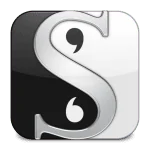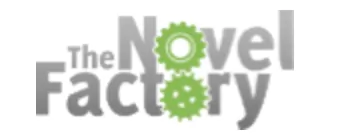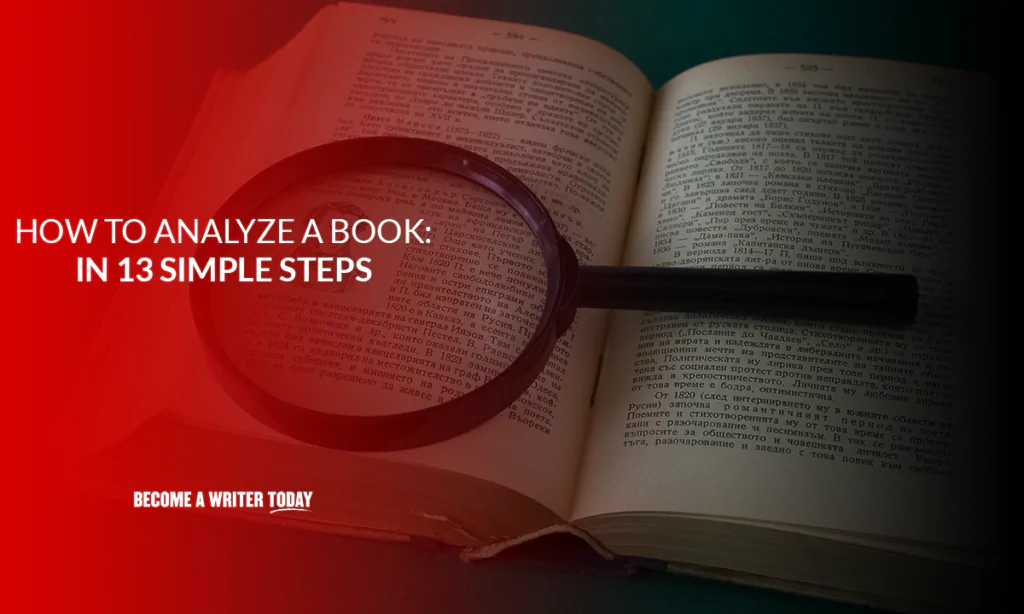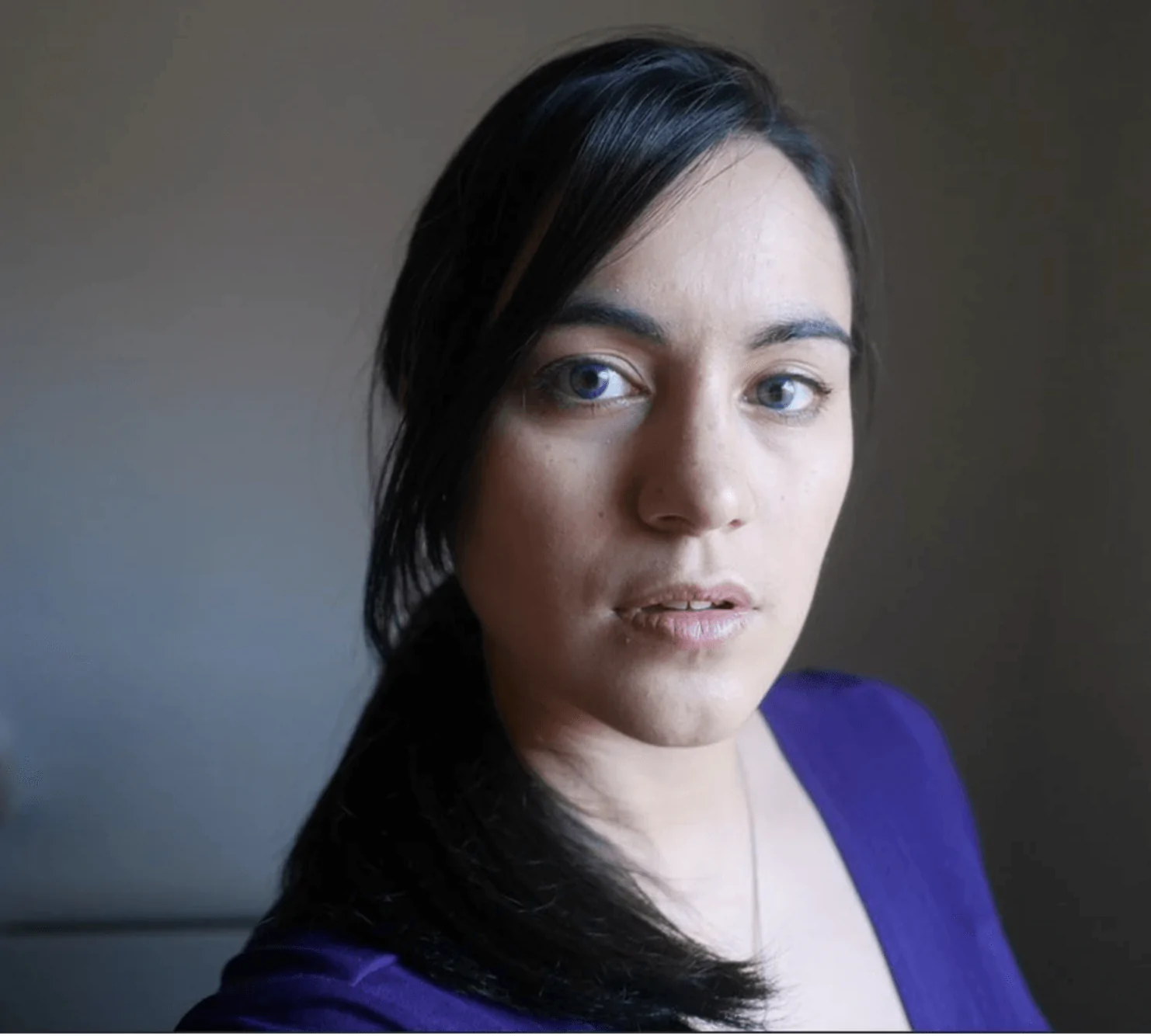Learning how to analyze a book will change the way you read and write. It’s easy to do and time well spent. We explain how.
Many new writers don’t appreciate how much they could accelerate their skills by reading more critically. That means analyzing a book once you’re done.
Katja L Kaine is the creator of the Novel Factory, a type of novel writer’s software that creates order from the chaos of creativity.
She’s spent over a decade writing novels, and she has helped many authors launch their writing journeys through her software and Novel Writing Roadmap.
In this article, Katja and I offer practical advice on how to analyze a book you enjoy reading and why it’s time well spent.
Contents
- Why Analyze a Book?
- 1. Pick A Book to Analyze
- 2. Read the Book Twice
- 3. Annotate Key Sections
- 4. Establish the Book’s Key Idea
- 5. Review the Context Behind the Book
- 6. Chart the Book’s Story Arcs
- 7. Reflect On Your Emotional Reaction
- 8. Evaluate the Book’s Bigger Picture
- 9. Mind Map the Book
- 10. Take Apart a Single Chapter
- 11. Check Other Blurbs, Reviews and Book Summaries
- 12. Add Entries to Your Slipbox
- 13. Review Your Book Analysis Regularly
- The Final Word On Analyzing a Book
- Analyze a Book: FAQs
- Further Reading
- Authors
| BEST BOOK EDITING SOFTWARE | ||
|---|---|---|
 |
| TRY GRAMMARLY → |
 |
| TRY PROWRITINGAID → |
 | SCRIVENER
| TRY SCRIVENER → |
 | THE NOVEL FACTORY
| TRY NOVEL FACTORY → |
Why Analyze a Book?

During a keynote speech at the 2016 Festival of Writing, C.L. Taylor strongly recommended analyzing your favorite books as a method of learning, saying it created the biggest leap forward in her writing.
At first, she received disheartening negative feedback about her early work. Critics suggested she should forget about becoming an author.
Today, C.L. Taylor’s books have sold in excess of a million copies, been number one on Amazon Kindle, Kobo, iBooks and Google Play and have been translated into over 25 languages.
The same principles apply across writing sectors. In Michael Hauge’s Writing Screenplays That Sell, he says,
“…as a serious screenwriter, you can no longer afford to regard movies as something you only do when you have a date on Saturday night.”
Michael Hauge
He instructs budding screenwriters to watch two movies per week and gives a detailed checklist “to make the process of watching films as informative as possible.”
In this article, we offer guidelines based on Taylor’s and Hauge’s advice with additional insights from our experiences as authors.
1. Pick A Book to Analyze
Analysing your favourite book is a great place to start if you want to improve your writing skills.
However, don’t stop there. Literary analysis takes time to learn, so review as many books as you can. Start in the genre or topic you want to write in and move out from there.
Then try reading from different genres for variety and to learn what sort of techniques are universal.
You can learn a lot from bad books too.
2. Read the Book Twice

The first time around, you don’t need to think about analysis. Experience the book as a natural reader. If it’s a classic novel, enjoy it! In some cases, non-fiction book repeat themes and ideas, so it’s fine to skip around.
The second time around, approach the book more critically. Pay close attention to the author’s writing style.
Use the table of contents to jump around to key sections and chapters. If you are analyzing non-fiction, consider how accurately the introduction and conclusion sum up the book.
3. Annotate Key Sections
Get a set of coloured markers, pencils, pens and mini sticky notes and put aside what you learned at school about never writing on books.
On the second (and third and fourth) read-throughs, you need to write ALL OVER that book. Obviously, if it’s your favourite book, you’ll probably need to buy a second copy just for the purposes of annotation.
If you’re reviewing a book on Kindle, use the annotation feature. When complete, you can export these notes to your email and review.
Tip: When annotating a book with multiple prints, try to get the one with the most spacious typesetting. Spacious margins and line heights are of real benefit here.
4. Establish the Book’s Key Idea
Every good non-fiction book contains a single controlling idea, topic statement or thesis statement that sums up what it’s about.
Typically, the writer explains their idea or argument in the introduction and conclusion. It’s usually a one or two sentences summary of the key themes or arguments in the book.
If you’re struggling to identify the thesis statement, Google for a book review. Alternatively, use a book summary service (more of this in a bit).
Determining the controlling idea will help you figure out if you agree or disagree with the book. It will also help you contrast different controlling ideas and even writer your own.
A topic statement is harder to identify for fiction. However, book reviews and book descriptions are a useful jumping-off point. If it’s a classic novel, chances are someone already did the hard work for you.
5. Review the Context Behind the Book
Authors don’t write books in a vacuum. They have a specific viewpoint, biases and write from the viewpoint of their education, geography and history.
If you’re evaluating a contemporary author, these factors are easy to identify. You could even read or listen to interviews with them.
If you’re evaluating an older book, check the references and read one or two other books that informed this one. Alternatively, read a biography about the author.
6. Chart the Book’s Story Arcs
Good novels typically have story arcs for each key character. Their world changes in some way from the beginning to the end of the story.
Non-fiction also contains arcs, if they’re any good. Consider the author’s viewpoint, the stories they tell and the characters or ideas in the book. You could chart each of these using bullet points or on a mind-map.
Alternatively, put each chapter title into a spreadsheet and write a one-line summary of what happened.
7. Reflect On Your Emotional Reaction
Think about which parts of the book engrossed or entertained you most.
In fiction, which parts moved you most? When did you feel most engaged with the characters? When were you on the edge of your seat?
Taylor and Hauge explained how top writers use the rule of three when setting up and delivering punchlines.
- What techniques does your favourite writer use to create humour?
- Build suspense?
- Create fascinating characters?
- In non-fiction, which sections did you find most enlightening?
- Did particular real-life examples or metaphors lodge in your mind?
- What parts did you feel affected your world view or understanding of the topic?
- Did anything make you take action to change your life or business?
8. Evaluate the Book’s Bigger Picture
Look at how the book is structured on a large scale. Is the setup effective?
- Do you see familiar themes?
- Are those themes used to good effect?
- Can you see where they fall down or how to improve them?
- Do points in the book falter?
- Can you determine how the story or topic is set up, developed and concluded?
- What would you change and why?
- Could you improve this chapter with a self-editing checklist?
9. Mind Map the Book
Mind mapping essentially involves writing down a single idea and expanding on this idea via connected or related ideas. It’s a good way of visualizing or outlining the structure of an entire book. We also recommend this step if you want to learn how to write a book.
For non-fiction, the central idea is the book’s key theme or big idea. The related ideas are usually other chapters. For fiction, consider using characters, viewpoints or story arcs.
Read our guide to mind mapping.
10. Take Apart a Single Chapter
Select a single chapter or section of the book and compare it with another.
- How are both constructed?
- How long or short are the words and body paragraphs?
- Does the writer use the same techniques, major character view points and storytelling methods?
- What’s the most common story element?
- What is the balance of description and action (fiction) or explanation and examples (non-fiction)?
It’s sometimes instructive to write out a page or two of a literary novel or classic by hand. This slows down the process of analyzing a book and helps you learn more of the author’s style.
11. Check Other Blurbs, Reviews and Book Summaries
This is the one area where advice varies depending on if you are writing fiction or non-fiction.
For fiction writers, it is best to go in “blind,” not knowing anything about the story in advance. This allows you to fully experience the surprises and emotional peaks and troughs as the writer intends.
However, for non-fiction, you can learn a great deal from seeing how the writer has broken down the content and summarised it in enticing, clear sections in the table of contents.
Blink and getAbstract are two good sources of book summaries for non-fiction.
12. Add Entries to Your Slipbox
A Slipbox or Zettelkästen is a place for storing research and connecting related ideas and themes. It’s a particularly useful research tool for non-fiction writers.
You could add:
- Summaries of surprising stories
- Interesting quotes
- Key facts or findings from the book
Write a short opinion about each of these Slipbox entries and interlink them. Instead of writing an essay, each Slipbox entry should only be a few sentences long.
Want to learn more about this process? Read our guide: What is the Zettelkästen Method?
13. Review Your Book Analysis Regularly
There’s little point in reviewing a book only to set your notes aside and never look at it again. A good writer reviews their research and ideas regularly. This process helps them figure out how to connect different ideas in unexpected ways.
You could:
- Read through your notes once a week
- Connect or interlink related notes as you add them
- Evaluate your notes while researching a new essay, article or book
The Final Word On Analyzing a Book
The pointers above are a starting point for those who want to improve your writing skills.
As you read more often, you’ll see what jumps, and you’re bound to notice new ideas during subsequent read-throughs.Prepare your checklist for analytical reading and follow your nose.
Once you’ve mastered the art of book analysis, you’ll be able to enrich and improve your own writing much more easily.
Want more advice like this? Learn how to analyze a poem.
If you’ve found this article useful, check out the Novel Factory. If you have any questions you can get in touch with Katja at [email protected].
Analyze a Book: FAQs
How do you analyze a story?
Ask these questions:
1. What’s the story about and who is it for?
2. Where is it set?
3.Who are the key characters and what do they want? What happened to them, for example a conflict or life event?
4. How did their world change during the story?
5. What was the point of this story?
How do you analyze a chapter in a book?
1. Read the chapter once
2. Read it again this time underlining key sections and themes
3. Write a short summary of the chapter
4. Ask what was the point of this chapter?
5. Consider how this chapter drives the book forward
6. Write your reaction to the chapter
7. If it’s literary fiction, consider writing out the first few pages by hand
This process also works well for a short story.
Further Reading
- Our Always Up-to-Date List of Great Books to Read
- Best Productivity and Time Management Books
- Best Self-help Books
- The Best Writing Books
- Best Leadership Books
- Best Grammar Books
- Best Writing Books
- Best Sci-Fi Books
- Best Dystopian Novels
- Audible: Is It Worth It?
- Best Philosophy Books
- Best Creativity Books
- Best Business Audiobooks

